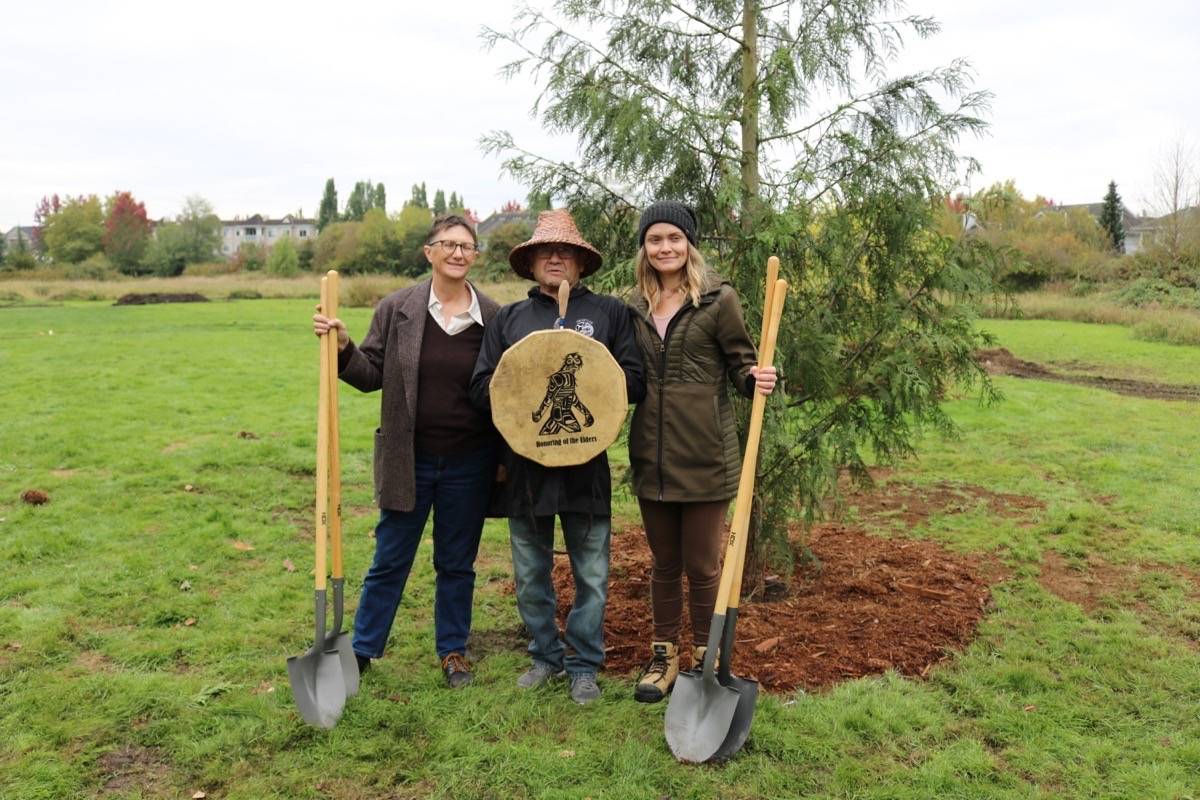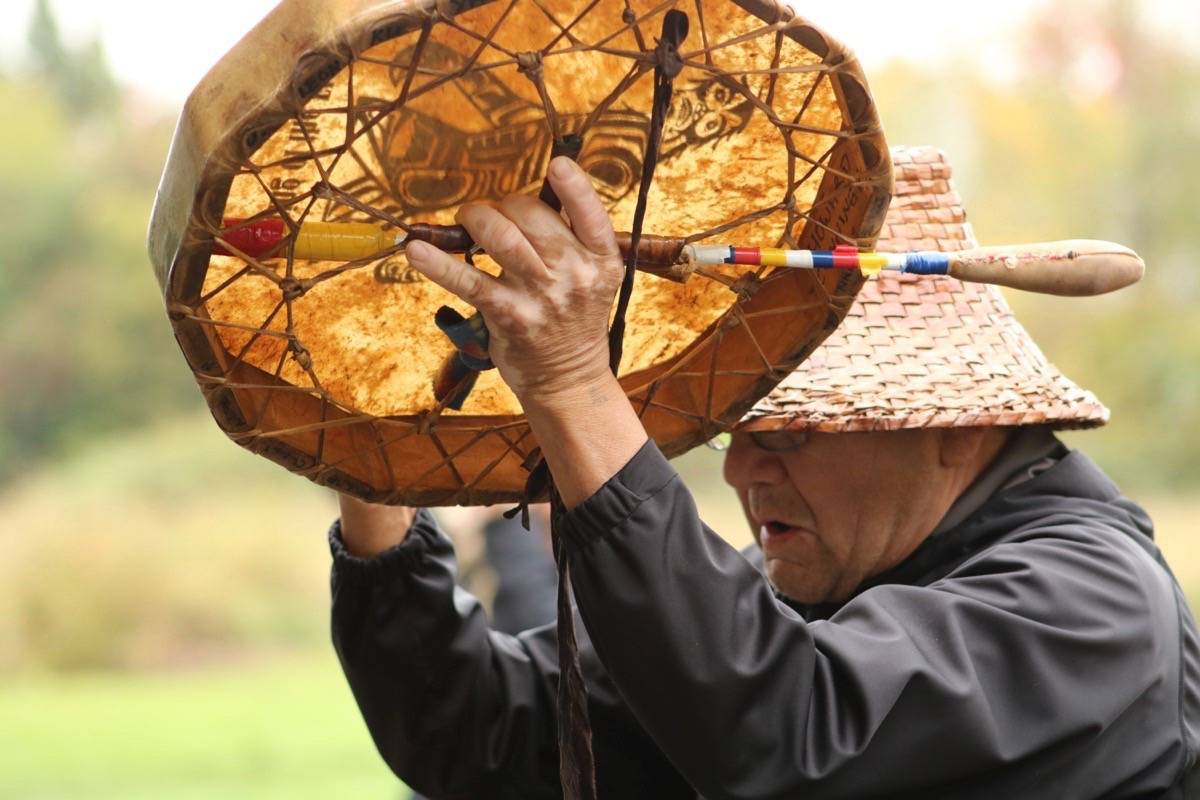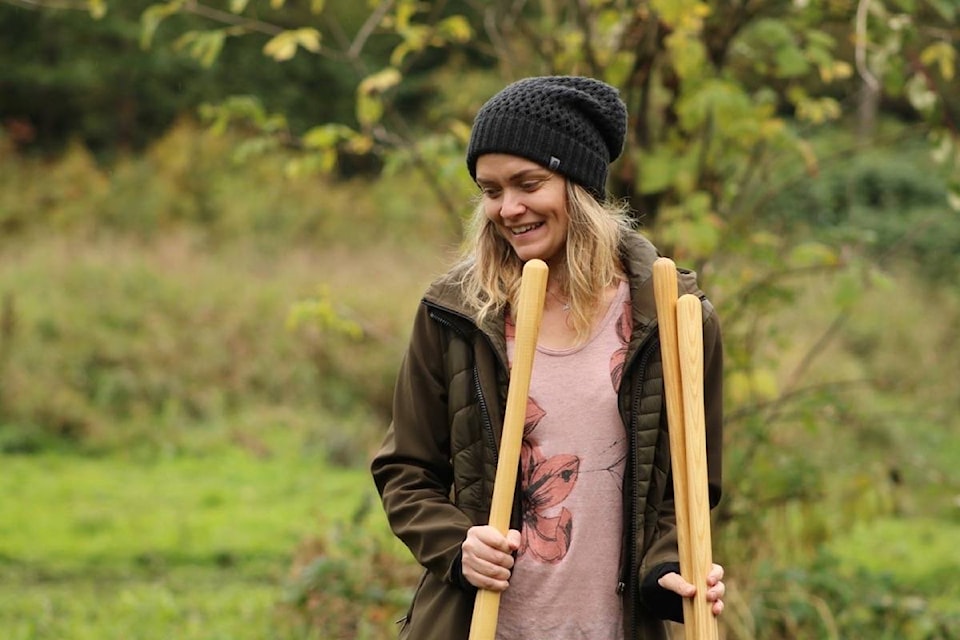Miranda Fatur
Times Reporter
A group of students at Kwantlen Polytechnic University are revitalizing the Logan Creek floodplain that surrounds the university’s Langley campus.
On Oct. 5, students and faculty joined members of Tree Canada, Canadian National Railway Company and the City and Township of Langley to celebrate phase two of the Logan Creek floodplain project, which will be completed in November.
The vision to create an urban forest at KPU was put into action after the school received a $25,000 grant from Tree Canada and the Canadian National Railway Company.
READ MORE: KPU Langley receives $25K grant to restore indigenous forest
The project is led by Dr. Kathy Dunster, an urban ecosystems instructor at KPU.
Phase one of the project started in 2015 when students worked to clear invasive species. In 2018 alone, the students have removed 3,763 invasive plants.
KPU student, Vanessa Brown, has been part of the project since the beginning.
“Some of the challenges have been the manpower, having to dig out all the blackberry, putting in pathways and boardwalks. I believe that healthy cities need to inter-web themselves with the environment. This is a great way to show an example of that. This area will start to show the benefits of the ecological system’s functions.”
The students have cut back invasive blackberry bushes, cleared the area, planted new trees and built boardwalks.
“The indigenous species we will be planting have been chosen because they are traditionally found in wetland and riparian ecosystems in the region and thrive in wet habitat. Many of the plants provide food and medicine used by the Coast Salish,” explained Dunster.
Students are continuing to plant native species important to the Kwantlen First Nation people.
The students have already planted a red cedar tree. Members of the community took turns shovelling dirt onto it during the Oct. 5 celebration.
Dunster said her class buried a time capsule underneath the ceremonial red cedar tree.
“We left all sorts of hints about who we are, and a copy of the student newspaper,” said Dunster.
Kwantlen First Nation Elder, Lekeyten, opened the ceremonial tree planting with a Kwantlen song.
“What we have here is something so powerful,” said Lekeyten.
“Looking after these trees takes a lot of work. To plant one tree takes a lot of time and dollars. All people in the world are affected by the water. We need it.”
Dunster added that the long-term goal of the floodplain project is to create a habitat that can be used by the Kwantlen First Nation.
“The long-term, 300-year goal is that the restored and redesigned riparian forest will support a thriving, bio-diverse salmon habitat and nourish native fruit-bearing plants traditionally used by the Kwantlen First Nation and available to them for present and future generations.”


